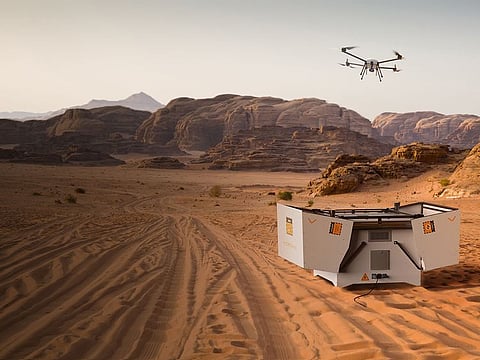UAE’s drone industry is actively hiring, with AI skills getting Dh30,000 plus
Engineers and those with AI skillsets are bagging anywhere from Dh25,000+

Dubai: A career in the drone business?
The pay scales are certainly looking good, with operators likely to earn between Dh4800 and Dh13,700 a month, while UAV (unmanned aerial vehicle) engineers can pick up above Dh22,000 to Dh25,000. Throw in a bit of AI specialization skills into it and the candidates pay scales can cross Dh30,000, according to the Economic Research Institute.
As multiple UAE sectors take to drone possibilities, “The UAE’s UAV sector holds an addressable value of approximately $1.1 billion,” said Alex Lapirov, CEO of Microavia, which has localised the entire drone manufacturing cycle from its Dubai Silicon Oasis hub (which opened in 2022).
Our most valuable asset is our people. In the UAE, we have access to talent from all over the world.

“This value is expected to grow significantly, especially with the expansion into logistics and human transportation using autonomous flying vehicles.”
As home-grown commercial drone manufacturers see a surge in their order books, the utilization of UAVs now spans infrastructure, agriculture, transportation and entertainment. This is the demand feeding into jobs for software and drone engineers, pilots, operators, business development managers, videographers and editors, as well as technicians.
Growth plans
Microavia has plans for significant capacity and product expansions to cater to rising demand in the MENA markets, including ones that integrate AI into flight scenarios to achieve complete flight autonomy.
Drone manufacturing firms are also turning to UAE universities for talent. “We are experiencing an increase in orders, and in the coming year, we plan to focus more on collaborating with universities, sourcing young talent, and providing training and opportunities,” said Lapirov.
Where can drones be used?
In the UAE, demand for technology specialists has been dominating the new jobs market. Experimentation and data collection lead to the discovery of new applications for drones of today and the near future. “In agriculture, for instance, drones are no longer limited to spraying pesticides,” said Lapirov. “They are now used for monitoring vegetation health and even predicting crop yields by analysing plant behaviour in the early stages.”
Drones are also revolutionising industrial applications, such as mining, where they can survey deposits. “Besides industrial, drones are finding their way into the entertainment industry, particularly in densely populated areas,” he added. “They are increasingly being used as alternatives to fireworks for aerial shows.” The monitoring and security sectors are also driving most drone demand in the region.
“For these purposes, companies are seeking structural engineers, AI-based developers, content creators, UAV quality engineers, and business development managers,” an Abu Dhabi based recruiter said.
Manufacturing drones in the UAE
Earlier this year, Abu Dhabi company Monarch Airplane Manufacturing joined hands with the Chinese autonomous aerial vehicle (AAV) technology platform EHang Holdings to develop sustainable electric-powered aircraft and drones for passenger and cargo transportation.
Last month, ADNOC partnered EDGE Group to integrate locally-made UAVs into its onshore and offshore operations. Dr. Saleh Hashem Alhashmi, Director, Group Commercial and In-Country Value at ADNOC, had said: “EDGE’s unmanned aerial vehicles will support us in stopping greenhouse gas emissions. These drones can cover vast areas and reduce the need to mobilise equipment and personnel to potentially harmful environments.”
Microavia, on the other hand, has two primary offerings on their drone lines – ‘Drone in a box’ (a general-purpose landing station for drones) and the heavy-duty option (Fortis) with a payload of 12kg, primarily serving geophysical sensing purposes in mineral exploration.
Supply chain
The company has invested significantly in establishing an end-to-end supply chain for its drone manufacturing. According to Lapirov, “Our philosophy is to source locally whenever possible at a reasonable price. If local sourcing isn’t feasible, we explore options within the GCC.”
For components like PCBS and battery cells not produced in the GCC, the company looks to India, China, Malaysia and the Philippines.
Lapirov said: “For specific components, we also source from Europe and the US, although lead times can be challenging. To address this, we occasionally procure from Southeast Asia.”
How long does it take to build drones?
The timeframe to build drones varies depending on the model, payload, and integrations, but generally, it takes a couple of days. Drones are typically built to order. “We follow a lean manufacturing philosophy, so we try to minimize stock levels,” said Alex Lapirov, CEO of Microavia. While the company doesn’t lease its drones, they offer a drone infrastructure-as-a-service program. The customer receives the platform and pays for their flight time. As for pricing, it’s customized based on the project and customer requirements. Some clients also opt for pilot and mission planning services.
Sign up for the Daily Briefing
Get the latest news and updates straight to your inbox








